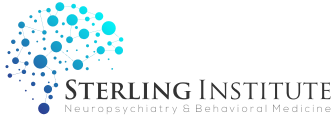An overview of intranasal ketamine’s potential for OCD treatment, its effectiveness, and research, as well as dosage and side effects, will be highlighted with a specific focus on Sterling institute’s treatment approach.

Introduction to Intranasal Ketamine in OCD Treatment
The FDA’s landmark approval of intranasal esketamine for management of treatment-resistant depression has spurred intense interest in the psychiatric community about the efficacy of ketamine-based treatments for Obsessive-Compulsive Disorder. This interest is a result of ketamine’s distinctive hallmark mechanism of action, which involves glutaminergic neurotransmission modulation, an effect distinctly different from the serotonergic-focused pathways that have been the mainstay of OCD treatment . The use of ketamine’s glutamate pathway in treating OCD opens up new possibilities of addressing the disorder, which has proved challenging due to its complex and often treatment-resistant nature .
While traditional Serotonin Reuptake Inhibitors or SRIs have proven somewhat effective for OCD, these drugs often take weeks or even months to have full efficacy and one generally needs quite high dosages for them to be effective.
Effectiveness of Intranasal Ketamine in OCD Treatment
Recent studies have shown the efficacy of intranasal ketamine goes beyond the remission of OCD symptoms to lasting changes in life capabilities. It helps reduce functional impairments to enhance quality of life by assisting the patient to get back many elements of the life the condition had overshadowed.
Achieving an optimal dosage and administration schedule is a necessary step. Intranasal Optimal dosing and timing of treatment takes time to determine because of the wide range of response patterns from individual to individual. Close monitoring physicians based on feedback from patients minimize potential adverse consequences while maximizing curative impact. This customization is crucial, as it accounts for the unique biological and psychological factors that influence each patient’s response to the treatment. Administering ketamine through a nasal spray provides a level of convenience and discretion that is highly valued by patients. This method enables individuals to integrate their treatment seamlessly into daily life, regardless of their setting, whether at home, work, or while traveling.

Side effects
It is essential for physicians and patients to remain mindful of Ketamine’s safety profile. Some individuals will develop certain side effects such as transient “dissociative states” that involve sensations of detachment from oneself or the surroundings; nasal discomfort; mild, transient, blood pressure elevation immediately following its use. Most of these effects are typically brief as the half-life of ketamine is just 12 minutes. This means that an hour later there are only negligible traces left in the system. Of course it is necessary to confirm that a patient is a suitable candidate for intranasal ketamine medication based on their medical history, prevailing mental health, and any other variables that could affect their response to the therapy.
Research on the therapeutic potential of ketamine for OCD has indeed provided valuable insights, especially with respect to ketamine’s impact on neuroplasticity and neural connectivity. This strong neurobiological underpinning has rendered this drug uniquely effective at combating a disorder characterized by inflexible patterns of thought and behavior. Unlike pharmacological therapies that target serotonin pr norepinephrine systems, ketamine’s effect on the glutamate system looks like it may be key to its more rapid onset of benefit. We know from research on other glutamate medications for neurological and psychiatric disorders that glutamate blockers directly enhance neuroplasticity. As research proceeds, Sterling Institute is dedicated to incorporating this evidence into the treatment we offer to ensure our patients receive cutting-edge and the most effective therapy. Learn more about how you might be a candidate to incorporate intranasal ketamine therapy into your treatment plan for OCD.

